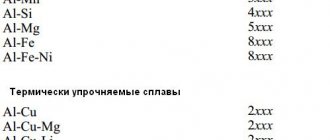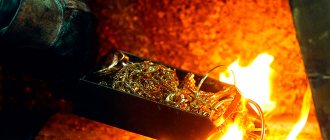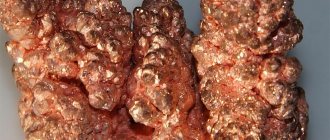There are situations when suddenly they offer a very profitable deal: buy jewelry or items made of gold at an unusually good price. As a rule, such offers come from individuals, and not from jewelry stores. Therefore, the question arises of how to distinguish gold from other metals. Moreover, every year an increasing number of supposedly gold jewelry appears on the unofficial jewelry market, which are actually made of various alloys. Visually distinguishing a fake is quite difficult, although there are several available ways to check the quality of gold without the involvement of experts and laboratory methods. But if the level of counterfeiting is very high, you are unlikely to determine the exact composition of the shiny product being offered to you.
In ancient times, the most common method of determining whether you have gold or not was a mechanical method. In many Westerns and films about pirates, we have seen its use: when gold coins are literally tested by the teeth. This is because gold is a soft metal that will deform slightly when force is applied to it. But in fact, this old-fashioned method is completely imperfect, because, for example, the same lead is also soft, and a bite mark will also remain on its surface. However, you can do without this furious method. There are many simple ways to recognize whether the item in front of you is a fake or a real one.
Affordable Home Remedies for Gold Testing
The easiest way to determine the “solar” metal quickly and accurately at home involves using a small amount of iodine. This simple medicine is sure to be found in every family. All you need for this:
How to recognize gold using iodine
- bottle of iodine;
- cotton swab;
- toothpaste;
- cotton pad.
Dip a cotton swab into iodine and place a dot on the surface of the supposed gold item. It is recommended to do this not in the most visible place of the decoration. For example, if you are faced with the task of checking a gold ring, then do this procedure from the inside of the jewelry.
Further, determining the authenticity of precious metal is quite simple. If after a few minutes the iodine point remains its original dark color, you can be sure that this is gold and not some other metal. But if the speck has acquired a light, milky hue, then in front of you is anything but gold jewelry.
When you have verified the authenticity of the jewelry, you have to wipe off a drop of iodine so that it does not spoil the overall appearance of the jewelry. You can't expect it to wear off over time. To do this, you will need the toothpaste indicated in the list of necessary tools. Apply a small amount to the iodine stain and leave it on for five minutes. Then rub gently with your finger to remove the stain. When it disappears, rinse the jewelry under running water and wipe thoroughly with a cotton pad.
Another quick and affordable way to distinguish real gold from other metals involves the use of vinegar, which is also probably found in every kitchen. Just pour a little vinegar into a clean bowl and dip the product into it. Three minutes is enough to understand the authenticity of gold jewelry. If within three minutes its surface does not become darker than it was initially, this is a good sign. But obvious darkening indicates that the jewelry was made of some other metal. After the experiment, simply wash the product with clean water and dry with a soft towel.
Look in your medicine cabinet and find a lapis pencil. This miracle drug is an antiseptic made on the basis of silver nitrate. It is usually used to get rid of warts, papillomas and other skin problems, but in addition to its direct purpose, it can also be useful to us in distinguishing genuine “solar” metal from others. In particular, it is the easiest way to distinguish real gold from gilding. Unlike iodine, which enters into a chemical reaction with gold, lapis pencil, on the contrary, does not react to it, but actively interacts with other metals. To check the quality of gold jewelry, you need to lightly file the product in an inconspicuous place. Then moisten the pencil with water and apply it to the surface of the file. Wait about five minutes to evaluate the result.
If a dark streak appears from the lapis, it means that this is a fake.
Test with black bread
The method is safe (for real gold!), but slow. Take the crumb of black bread, remember, mix with water and stick the mixture onto the product. Leave it until the bread crumb turns into a dry crust, then break it apart.
If there are dark traces inside the crumb, it means the fake has oxidized. If not, then it is either gold or good gilding.
Popular laboratory methods for gold analysis
More serious methods of verifying the authenticity of gold jewelry are used in pawnshops and in production. Among the most commonly used laboratory testing methods are the following:
- drip method;
- use of touchstone;
- use of nitric acid;
- assay analysis;
- instrument testing;
- X-ray inspection.
The drop method for testing gold quality is a bit similar to the home method using iodine. But only in the laboratory are more complex chemical solutions used for this purpose. They interact with the ligatures that make up the gold alloy and change their color. Thus, these solutions indicate what alloys (metals) are included in gold and their quantity. For a quality test, not only the chemical solution is important, but also the qualifications of a specialist who wants to distinguish gold from other metals used in the jewelry industry. He must be able to see the slightest differences in color during a chemical reaction.
One of the chemical elements often used to analyze the composition of gold is chlorine. If it is used, the color of gold will take on a different shade - depending on the standard of the precious metal. If during the analysis a green speck appears on the gold surface, this indicates that sample 375 was tested. The most popular 585 yellow or red gold is characterized by the appearance of a light brown speck. But on white gold of a similar standard, during a chemical reaction, a spot of a golden hue or orange color will appear.
To determine the quality of gold jewelry, many pawnshops use a touchstone - a black block with a rough surface.
It is a fine-grained siliceous shale. To check the quality of a gold product, the specialist first rubs the touchstone with almond oil and wipes it dry using special filter paper. Then he draws a one and a half centimeter line on the surface of the touchstone with the gold jewelry. After this, the specialist applies strokes to the stone with special needles indicating the gold standard. After this, he applies a little nitric acid across all the strokes. During the chemical reaction, the alloys begin to oxidize, and the lines acquire different colors, by which the quality of the analyzed gold object is judged.
The colors obtained from the strokes of the assay needles are compared with the color of the stroke of the gold product. With which of the strokes the color matches, that sample will be the analyzed gold object. If the shade of the line left by the item being tested on the touchstone is darker than the shade of the matching needle, there is reason to be wary. This means that the sample applied to the surface of the jewelry being tested is actually lower than specified. If the color of the line does not coincide with any of the other lines, it means that the product being tested is not made of gold, but of another metal.
Precious metal shades
Look at the sample
Factory products always have a standard stamp with a hallmark. Fineness is the number of grams of pure metal in the alloy; the lower it is, the worse the quality.
According to Decree of the Government of the Russian Federation dated May 6, 2016 No. 394, all alloys in which more than 30% of the weight is precious metal must be stamped with hallmark. Standard samples for gold are 375 (lowest), 500, 583, 585, 750, 916, 958, 999 (highest - only 1 g of impurities per 1 kg of metal).
In the USA and Canada, carat hallmarks are used (9 carats correspond to the 375th hallmark, 24 carats correspond to the 999th). Moreover, the letter K next to the numbers means that the product itself is gold, and KGP means that it is plated with gold (karat gold plated).
In Belgium, gold samples are designated by numbers: 1 – 833, 2 – 750, 3 – 585. A similar system works in the Czech Republic and Slovakia: 0 – 999, 1 – 986, 2 – 900, 3 – 750, 4 – 585.
Examining a sample is often difficult. Use your smartphone in macro mode, then enlarge the photo and look at the sample in detail. The mark should not be crooked or blurry. This is, if you like, a passport of the product, so they are very careful when applying it.
Complex laboratory analysis
You can use nitric acid to test gold without manipulating a touchstone or special needles. To do this, the laboratory takes a sterile metal container into which the gold item being tested is placed. Using a pipette, a small amount of nitric acid is dropped onto the surface. Real gold will not react in any way to this interaction, but other metals will show themselves by changing their shade. Depending on the composition of the item, it may change color to green or milky. A greenish tint indicates that the jewelry is only covered with a layer of gold plating, but its base consists of another metal. And the milky tint says that this is high-quality silver with gilding. But in any case, the jewelry being tested is definitely not made of gold.
Hallmark analysis is not suitable for determining the authenticity of small jewelry; it is more often used when you need to know the quality of gold bars or other massive gold objects. This is due to the fact that during laboratory manipulations, in order to distinguish gold, a piece is sawn off from the product as an analyzed sample. This piece is heated to a very high temperature at which it melts. This gold liquid is then combined with liquid silver and lead. These elemental agents, at the end of a long analysis process, separate and collect the pure gold. The resulting sample is weighed to determine how pure the original sample was.
Today, there are more modern methods of how to accurately distinguish gold from other various metals without causing harm to the product.
In particular, electronic testers can be used. There are units for both laboratories and individuals. True, due to the high cost of these devices, you rarely see them in small pawn shops, much less in someone’s home. The operating method of such electronic testers is based on the use of special liquids to scan a sample. After checking, the device determines the purity of the gold and displays its numerical value on the screen.
An even more expensive method for determining the purity of gold can only be used in professional laboratories, as it involves interaction with X-rays. This complex process allows not only to distinguish pure gold from other metals, but also to obtain a complete report on the composition of the gold alloy. The advantage of this method is that the analyzed jewelry will not be subject to mechanical stress.
Air signs
The most suitable metal according to the zodiac signs of the air elements is silver, copper, bronze. “Air” people are communicative, freedom-loving, and changeable. Therefore, metals and stones are suitable for them, helping to activate their best qualities and saving them from hasty decisions and senseless risks.
Aquarians are eccentric and energetic people, despite their apparent modesty; deep thinkers with a passion for helping people. They know how to solve problems easily; They are friendly, so they can boast of many friends. Metals for Aquarius are determined by their ruling planet, Uranus. Their talismans are green gold, copper, lead. Of the precious stones, sardonyx, coral, and fluorite are considered their amulets.
Communicative Geminis are very enterprising. This sign needs intellectual stimulation; he always seeks development physically, mentally and spiritually. Since the patron saint of Gemini is Mars, metals such as mercury and silver are suitable for them. And their stones are considered to be aquamarine, emerald, and crystal.
People born under the sign of Libra are calm and fair. They really want to love and be loved, they hate loneliness. In pursuit of equality and justice, they must strive for spiritual harmony. Metals such as bronze and white gold help them achieve this. They prefer malachite, emerald, and carnelian as precious stones.
Methods for checking gold items in a store
Particularly difficult is the task of distinguishing gold from other metals with similar external characteristics without leaving the store display. After all, the seller will probably not allow iodine to be dripped onto jewelry, much less scratch its surface in order to get to the bottom of the truth. In this case, you will have to rely on the seller’s honesty and the good name of the jewelry store. But when you are on vacation, for example, in Turkey or Egypt, where you have taken a fancy to some kind of gold jewelry, it is quite difficult to rely on the honesty of the store, since ordinary tourists simply do not know which jewelry chains there can be trusted. Then you need to be vigilant and carefully examine the gold item you are purchasing, at least visually.
What should you pay special attention to? First, study the hallmark, which must be applied to the surface of the jewelry. As a rule, the values are very small and difficult to see with the naked eye, so ask the seller to give you a magnifying glass, or use vision glasses. Study the sample carefully. If you notice that the numbers on the stamp “jump” or their outlines are very illegible, this may indicate that you have a low-quality product. This method of visual analysis will not be able to completely protect you from buying a fake, since only a professional appraiser can do this, but it may stop you from making a quick purchase if in doubt. If you, in principle, could not find a test mark, then you can safely leave the jewelry store, since they are definitely trying to sell you a fake, and a low-quality one at that.
Be sure to ask the seller to demonstrate a quality certificate confirming the composition of the gold alloy, with an exact indication of the alloys included in it and their quantity. Check that the certificate has the seals and signatures of the responsible persons.
When you plan to buy gold jewelry at a pawn shop, second-hand store, or simply secondhand, you should also pay attention to the overall appearance of the jewelry. Make sure that the uniformity of the gold coating is the same in all places. Pay special attention to the edges of the jewelry, as well as where it touches the skin. If you notice that other metal is visible in areas of wear, refuse to purchase as it is not real gold. Most likely this item is made of a different metal and simply has gold plating.
At the same time, if you are dealing with a product made of real gold, the color of its surface may also differ slightly, but precisely in the richness of the golden hue. This is especially true for items consisting of several elements, such as a bracelet or watch. Where the two links meet, the gold surface will be a little brighter. Soldering of products is done using gold solder of a higher standard, since such gold melts more easily. And at the junctions this moment can be noticeable.
Attach a magnet
Plating steel or other alloys with a high iron content with gold or its imitation is a common practice. Only ferromagnets are strongly magnetic - iron, cobalt, nickel, gadolinium, terbium, dysprosium, holmium, erbium, thulium.
Dimagnets (for example, water or table salt) and paramagnets (aluminum, etc.) are weakly magnetic. All non-ferrous metal is not magnetic.
If it happens on the beach or in places where tourists gather, buy the cheapest magnet in a souvenir shop and attach it to the product. If it sticks, it’s definitely a fake or the metal is of too low standard (too many iron impurities). If not, perform other checks.
How to recognize white gold
Another reason to be attentive and cautious: “solar” metal is not only the usual yellow color. It is quite difficult to determine the authenticity of products made of white gold, which an ignorant person can easily confuse with silver. How to be?
Original methods will help you distinguish white gold from silver
| What to do | What result is possible |
| There is another simple method for distinguishing real white gold from silver. To do this, you only need a clean sheet of paper. Slide the decoration over the surface of the paper. | If a gray stripe remains on it, this means that they are trying to sell you silver jewelry. This effect is explained by the fact that the density of silver is softer than that of real gold, which will not “draw” on paper. |
| Another simple cosmetic product such as foundation will come to the rescue. Apply a little foundation to the back of your hand and wait until it is completely absorbed into the skin. Then run the gold jewelry over the area. | When it comes into contact with real gold foundation, a gray stripe will appear on the skin. But if there is none left, then, most likely, you are looking at a piece of jewelry made from brass. |
Also pay attention to the color. In silver it is cold white, but white gold has a warmer tint. If a white gold item is coated with a rhodium layer, then the jewelry will have a barely noticeable bluish glow.
Useful uses of brass in electronics
Brass is not a noble metal, but is a sought-after alloy. Parts of various mechanisms are made from it. Products made from brass:
- pipes for appliances;
- foil;
- sheets;
- bushings;
- wire;
- rods;
- tape, etc.
Brass is used in the installation of radio components, and is also used in radio instrument making (hardware, gears, and printed circuits are made). Moreover, the material is sent for re-melting, after which it can be reused.
Use of brass alloys in electronics
Gemstone Testing
Products with stones are most valuable. Knowing how to test gold, it is useful to familiarize yourself with the procedure for testing stones. In a pawnshop, the procedure is carried out according to the global 4C methodology for four indicators:
- mass of stone;
- color;
- purity;
- cut.
The weight of the material is measured in carats. Stones are small - less than 0.29 carats, medium - less than 0.99 and large - more than 1 carat. This indicator is determined by weighing and subsequent visual inspection using a magnifying device.
The color is clearly visible if you place the stone on a white piece of paper or plastic. In this case, gemological lighting with white rays is used.
The most important criterion for a stone is purity. To identify it, GOST tables have been developed. There are 12 purity values. Stones with severe damage are of least importance. Cracks that are visible at 10x magnification or with the naked eye are taken into account. Higher magnification is not used to evaluate purity. Scratches can be on the surface of the material or inside.
To evaluate the cut, a scale with graduations A-G is used. The methodology was developed by GOST. This parameter is subjective, since the same cut may attract one consumer and not appeal to another. But often a product is purchased based on its cut.
A complete gold inspection includes an assessment of the precious metal and stone, mounting option, appearance of the product, manufacturer and level of wear. How the gold is checked at a pawnshop determines whether the owner will be able to sell it at a decent price. At home, it is impossible to accurately determine the quality of the decoration. Therefore, it is worth resorting to the help of professionals.











